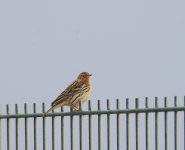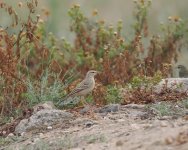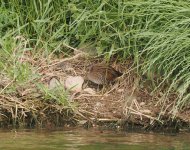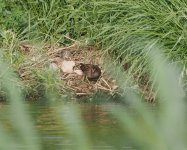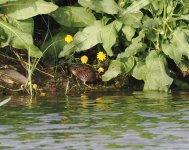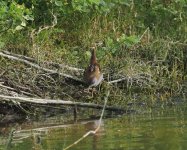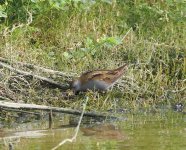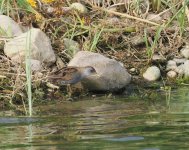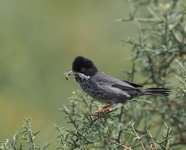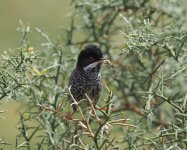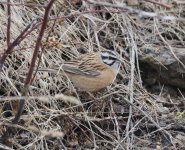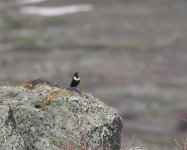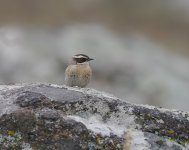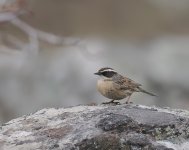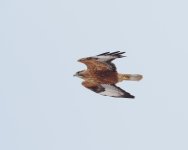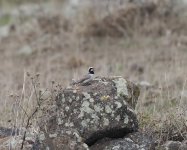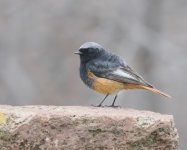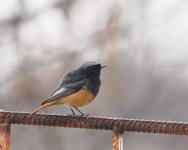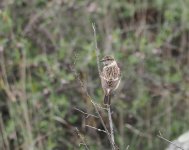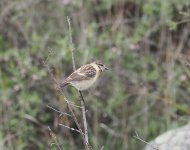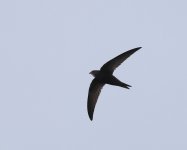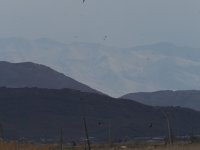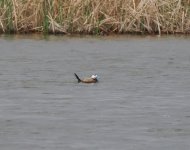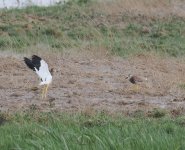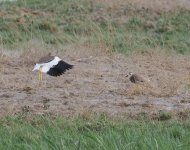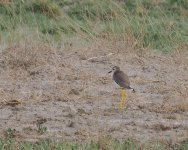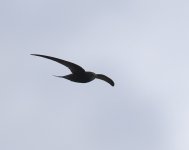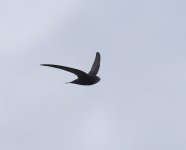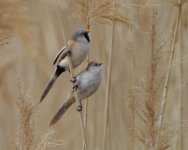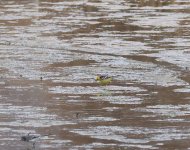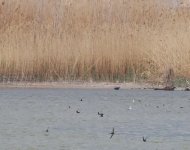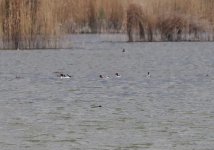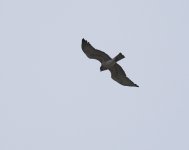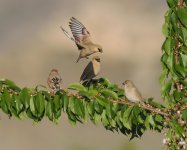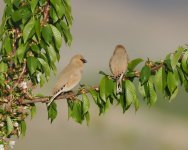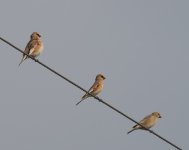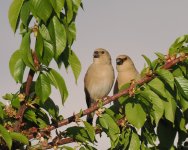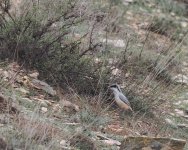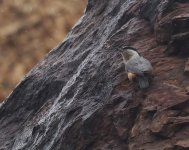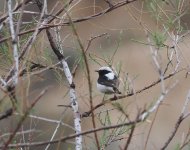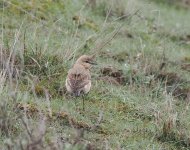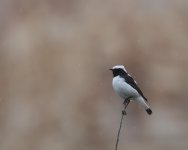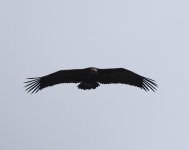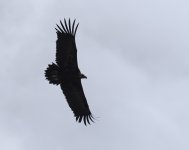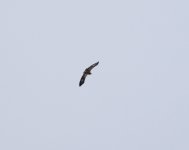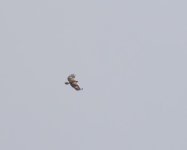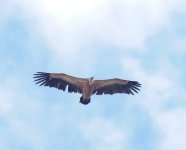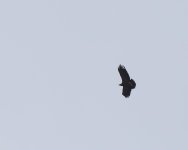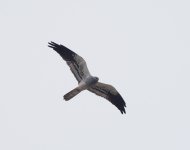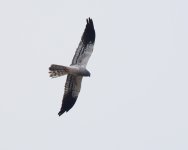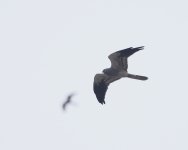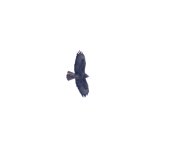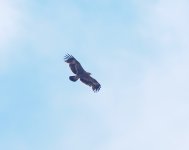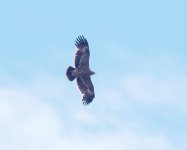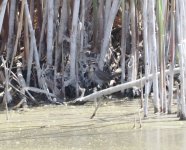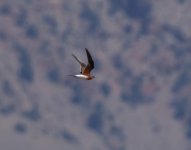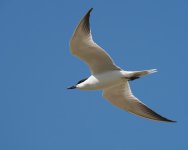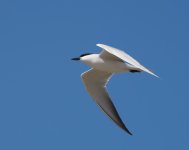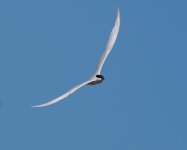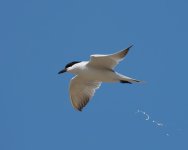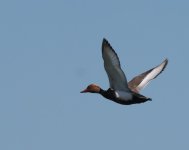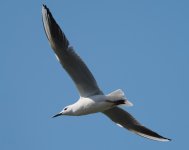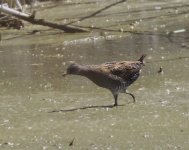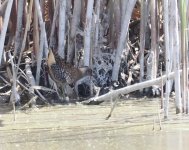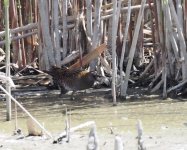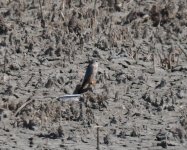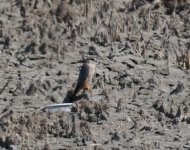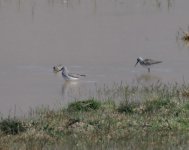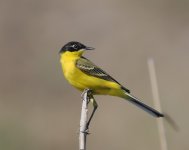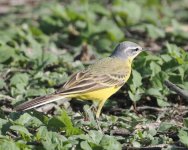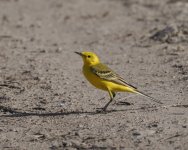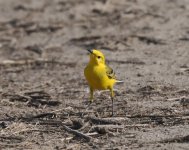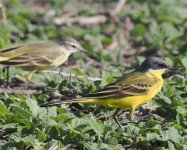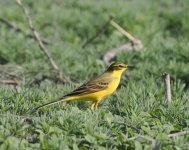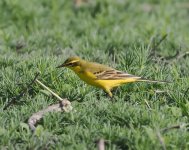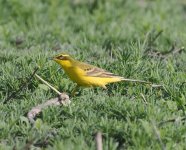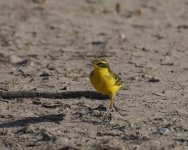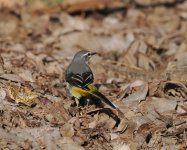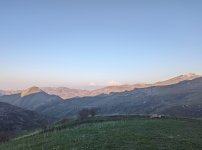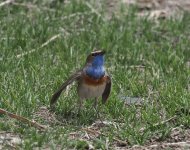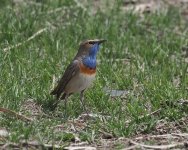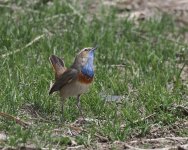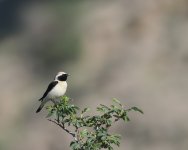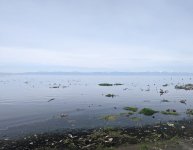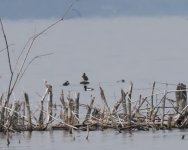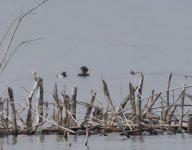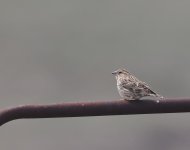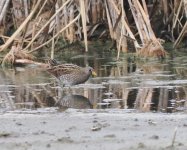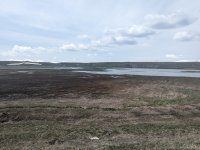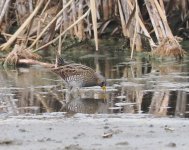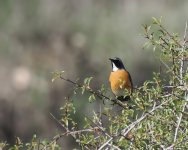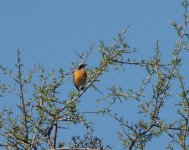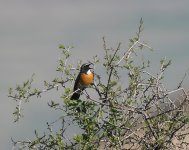
Am currently on a bit of a jaunt to the east of the Western Palearctic. I'm in Armenia for a week or so, sandwiched between a few days in Cyprus. So far, things have been very good.
I arrived at Larnaca in Cyprus in the early hours of Sunday 9th. I stayed nearby for the night and then birded the nearby area when I arose in the morning. My hotel was very near the large Larnaca Salt Lake. As I looked out into the street, a few Laughing Doves made me realise I was on holiday. The stroll to the salt lake revealed a lovely pair of Spur-winged Lapwings, pottering about on an area of waste ground, and a Wryneck was in the trees nearby. The salt lake held plenty of Greater Flamingos, a Ruddy Shelduck flew over, a few Slender-billed Gulls were in the distance and two lovely Marsh Sandpipers were among the numerous Ruff.
I then continued on my way, calling in at Larnaca Sewage Works. The observation tower gives good views over the pools, where a Garganey was among the commoner ducks. A few Little Terns were flying over and there were more Spur-winged Lapwings and Slender-billed Gulls. A female Spectacled Warbler appeared in the nearby scrub. Just up the road at Spiro's Pool were lots of Kentish Plovers and Little Stints. In the nearby field, I managed to see the head of a Black Francolin as it poked above the wheat to call loudly.
I then headed off west to Paphos, where I was staying for the night. After checking in, I headed to the archaeological site at Paphos headland, hoping for some migrants. I wasn't to be disappointed. Most obvious were the numerous Yellow Wagtails, mostly either Black-headed or Blue-headed. Among them were a Tree Pipit, a Tawny Pipit and several Ortolan Buntings. Woodchat Shrikes dotted the small bushes and a Red-rumped Swallow flew over. A few Eastern Black-eared Wheatears and a single Isabelline Wheatear were also around the edge of the ruins. In one corner there were lots of showy Red-throated Pipits, many of which perched up on the perimeter fence for good views. A large group of Short-toed Larks were in the same area. On the way out of the ruins, I noticed a Tree Sparrow on the fenceline. I later found out it was pretty rare in Cyprus.
I ended the day along the road up to Mavrokolympos Dam. I was hoping to find Cyprus Scops Owl so hung around well after dark. Nothing was doing, unfortunately. By way of compensation, I did see a male Cyprus Pied Wheatear, hopping about along a ridge line above the road. An Alpine Swift flew through among a huge throng of Common Swifts and hirundines. A Chukar was seen calling from up on the crags.
I arrived at Larnaca in Cyprus in the early hours of Sunday 9th. I stayed nearby for the night and then birded the nearby area when I arose in the morning. My hotel was very near the large Larnaca Salt Lake. As I looked out into the street, a few Laughing Doves made me realise I was on holiday. The stroll to the salt lake revealed a lovely pair of Spur-winged Lapwings, pottering about on an area of waste ground, and a Wryneck was in the trees nearby. The salt lake held plenty of Greater Flamingos, a Ruddy Shelduck flew over, a few Slender-billed Gulls were in the distance and two lovely Marsh Sandpipers were among the numerous Ruff.
I then continued on my way, calling in at Larnaca Sewage Works. The observation tower gives good views over the pools, where a Garganey was among the commoner ducks. A few Little Terns were flying over and there were more Spur-winged Lapwings and Slender-billed Gulls. A female Spectacled Warbler appeared in the nearby scrub. Just up the road at Spiro's Pool were lots of Kentish Plovers and Little Stints. In the nearby field, I managed to see the head of a Black Francolin as it poked above the wheat to call loudly.
I then headed off west to Paphos, where I was staying for the night. After checking in, I headed to the archaeological site at Paphos headland, hoping for some migrants. I wasn't to be disappointed. Most obvious were the numerous Yellow Wagtails, mostly either Black-headed or Blue-headed. Among them were a Tree Pipit, a Tawny Pipit and several Ortolan Buntings. Woodchat Shrikes dotted the small bushes and a Red-rumped Swallow flew over. A few Eastern Black-eared Wheatears and a single Isabelline Wheatear were also around the edge of the ruins. In one corner there were lots of showy Red-throated Pipits, many of which perched up on the perimeter fence for good views. A large group of Short-toed Larks were in the same area. On the way out of the ruins, I noticed a Tree Sparrow on the fenceline. I later found out it was pretty rare in Cyprus.
I ended the day along the road up to Mavrokolympos Dam. I was hoping to find Cyprus Scops Owl so hung around well after dark. Nothing was doing, unfortunately. By way of compensation, I did see a male Cyprus Pied Wheatear, hopping about along a ridge line above the road. An Alpine Swift flew through among a huge throng of Common Swifts and hirundines. A Chukar was seen calling from up on the crags.




